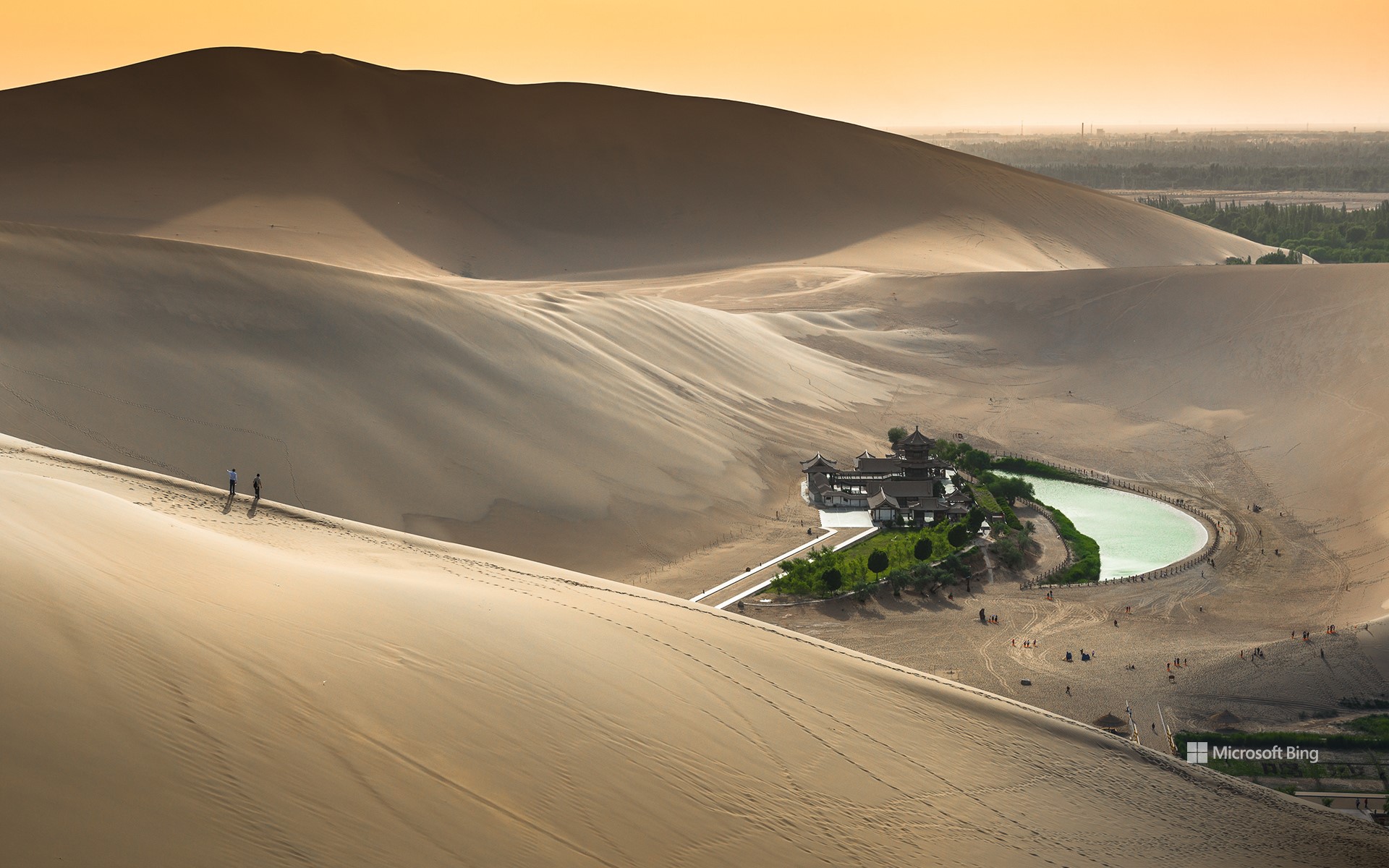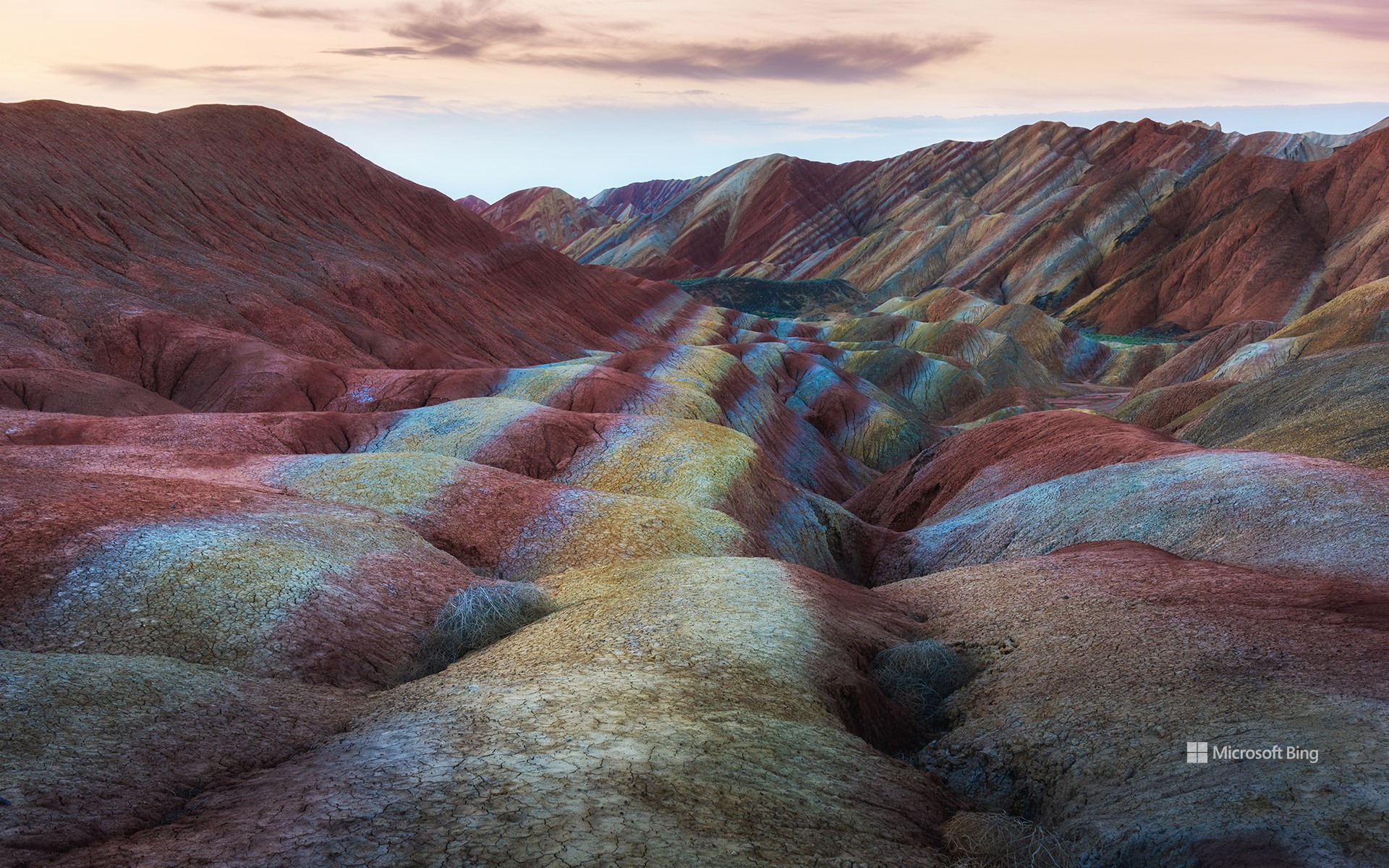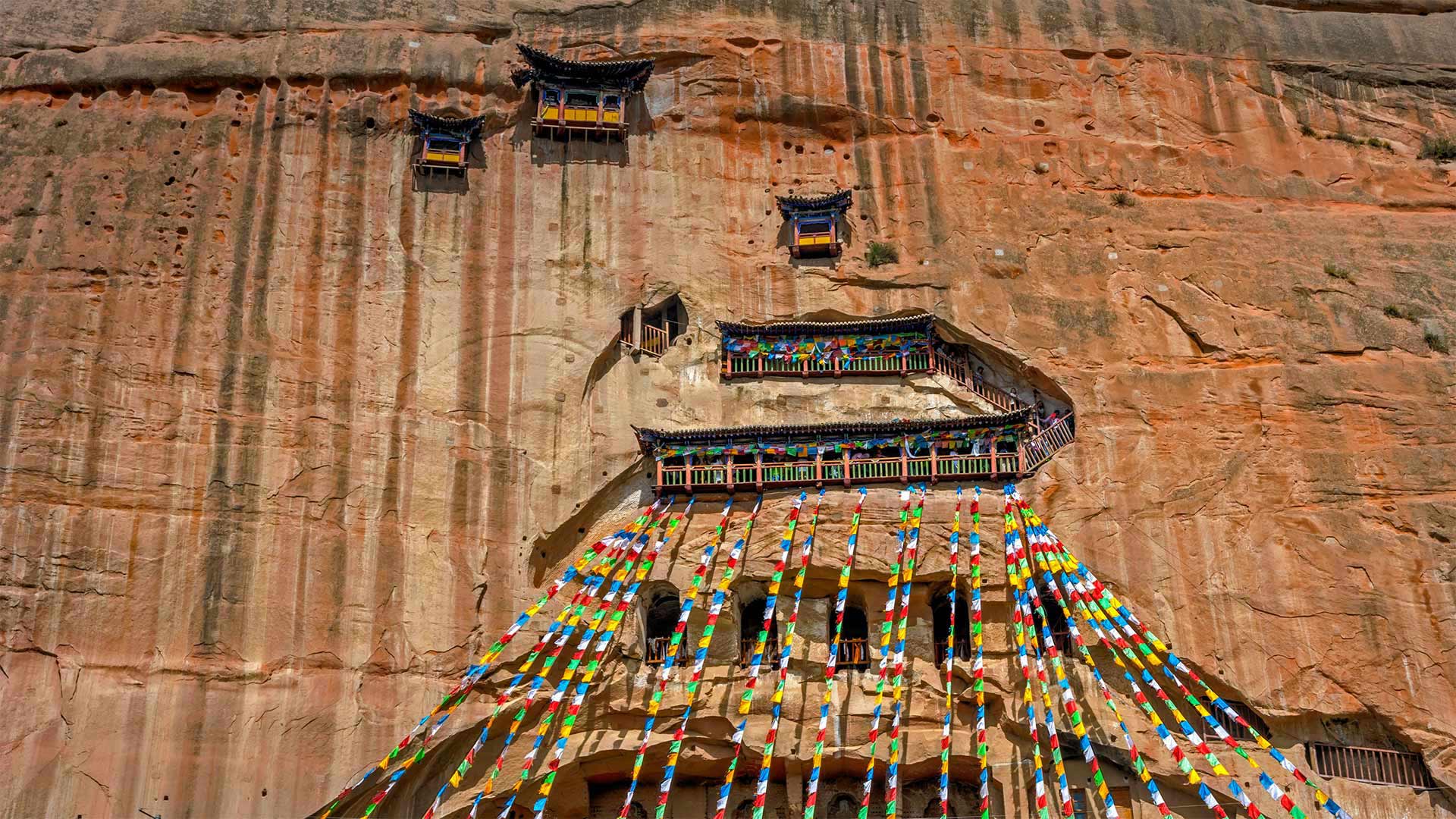标签 甘肃 下的文章
敦煌月牙泉,甘肃省,中国 Crescent Lake near Dunhuang, Gansu Province, China (© R7 Photo/Shutterstock)

敦煌月牙泉,甘肃省,中国 Crescent Lake near Dunhuang, Gansu Province, China (© R7 Photo/Shutterstock)
这片湖泊可不是海市蜃楼 This lake is no mirage
敦煌月牙泉,中国
月牙泉位于中国甘肃省敦煌市附近,是隐藏在广袤戈壁滩上的一个摄人心魄的自然奇观。数百年来,这片因独特的月牙形状而闻名的绿洲,一直是一个重要的水源地。人们认为,月牙泉是风蚀形成的,其水源是地下泉水。由于附近有山脉遮挡,月牙泉才不会被该地的风沙所淹没。当地采取了许多保护措施,确保月牙泉不会干涸。游客不仅可以在湖上划船、骑骆驼在沙漠徜徉,还可以在附近的莫高窟欣赏古代佛教壁画及雕塑。
Crescent Lake near Dunhuang, China
Crescent Lake is a captivating natural wonder hidden in the vast Gobi Desert near the city of Dunhuang in China's Gansu province. This oasis, named for its unusual shape, has been a vital water source here for centuries. The lake is thought to have formed in a valley carved by wind and been fed by an underground spring. It sits amid Dunhuang's 'singing' sand dunes, which make a noise when the wind blows. The sand dunes also help stop the lake from being swallowed by sand and conservation efforts have ensured that it doesn't dry out. Visitors enjoy boating on the lake, camel rides through the surrounding dunes, and seeing ancient Buddhist art and murals in the nearby Mogao Caves.
张掖国家地质公园,甘肃,中国 Zhangye Danxia National Geopark, Gansu, China (© TONNAJA/Getty Images)

张掖国家地质公园,甘肃,中国 Zhangye Danxia National Geopark, Gansu, China (© TONNAJA/Getty Images)
行走在彩虹岩石上 Walking a rocky rainbow
国际岩石日
7月13日是国际岩石日。为什么要给岩石设立一个节日呢?因为自石器时代以来,岩石就在人类历史中扮演着重要角色。它们是人类最早的工具,也是自然的记录,包裹着古代生物的化石,也留下了地质变化的印记。中国张掖丹霞国家地质公园的彩虹山就是一个很好的例子。这里的沉积岩经过数百万年的风化和侵蚀,最终形成了这片色彩斑斓的风景,红、橙、黄、紫各色疏密相生,组合有序。变质岩、沉积岩、火成岩等等各种各样的岩石帮助形成了我们今天所生活的世界。
International Rock Day
International Rock Day, on July 13, celebrates these hardy heroes, which have played a big part in human history since at least the Stone Age. They served as humanity's first tools and as nature's journals, protecting ancient fossils and documenting changes caused by geological processes.
Our homepage image shows Zhangye National Geopark's Rainbow Mountains in China, an incredible landscape created over millions of years. Those colorful layers are formed of sedimentary sandstone rock. Iron oxide gave the rock its predominately rusty hue, while other oxides tinted the various layers brown, yellow, and green. Sandstone and minerals that were once layered on top of each other were lifted and distorted by tectonic movement, revealing those colorful stripes. And that is not the end of this geological tale. This unique landscape continues to change, as wind and water erosion sculpts new pillars and ravines. No matter what your favorite category of rock is—metamorphic, sedimentary, or igneous—rocks of every kind helped build the world we live in today.
马蹄寺风景区内的马蹄寺和石窟,中国甘肃省 The Mati Si (Horse's Hoof Temple) and grottoes of Mati Si Scenic Area, Gansu province, China (© Ana Flašker/Alamy)

马蹄寺风景区内的马蹄寺和石窟,中国甘肃省 The Mati Si (Horse's Hoof Temple) and grottoes of Mati Si Scenic Area, Gansu province, China (© Ana Flašker/Alamy)
A cliff-hanging complex of temples
Feast your eyes on the colorful Mati Si (Horse's Hoof Temple) and its cliffside complex of sandstone grottoes and wooden pavilions. To understand the mythical origin of the Horse's Hoof Temple, you have to squint your eyes a bit. Then you might be able to see the hoof marks left by a frightened longma, the fabled winged dragon horse that purportedly landed here thousands of years ago. What you can't see is the claustrophobic network of tunnels connecting the seven floors and seven grottoes to the Mati Si pagoda, which itself is 200 feet high and holds hundreds of Buddha statues.
Mati Si lies within the grasslands of China's Gansu province along the Hexi Corridor of what was once China's Northern Silk Road. There's no bus service to the temple so you'll have to grab a taxi or, like the mythical dragon horse that left its imprint here, hoof it.